Truth matters. Community matters. Your support makes both possible. LAist is one of the few places where news remains independent and free from political and corporate influence. Stand up for truth and for LAist. Make your year-end tax-deductible gift now.
How The Historic Mount Wilson Trail Is Being Rebuilt After Fire And Flood

I’m standing with Bob Spears in the echoey chambers of a metal shipping container just below the trailhead of the Mount Wilson Trail in Sierra Madre.
“We have all the materials that we use to rebuild the trail when things go bad,” Spears tells me.
Shovels line the metal walls, as do McLeods, a tool that’s like a cross between a rake and an ax. There are also 6-foot-long sharpened T-stakes, burlap, and other materials used as needed to fortify the sides of a trail to prevent further erosion.
Spears is 74, a retired L.A. Unified School District English teacher and former volunteer firefighter. Now, he’s the lead trail maintenance volunteer for the first 3.5 miles of the Mount Wilson Trail.
“One of our things is to try to keep the trail wide enough so two people can pass without one person feeling unsafe,” Spears said.
This part of the trail is particularly popular for hikers and hosts a trail race every May, which in the past has usually been what Spears and his three or four other consistent volunteers prepare the trail for.
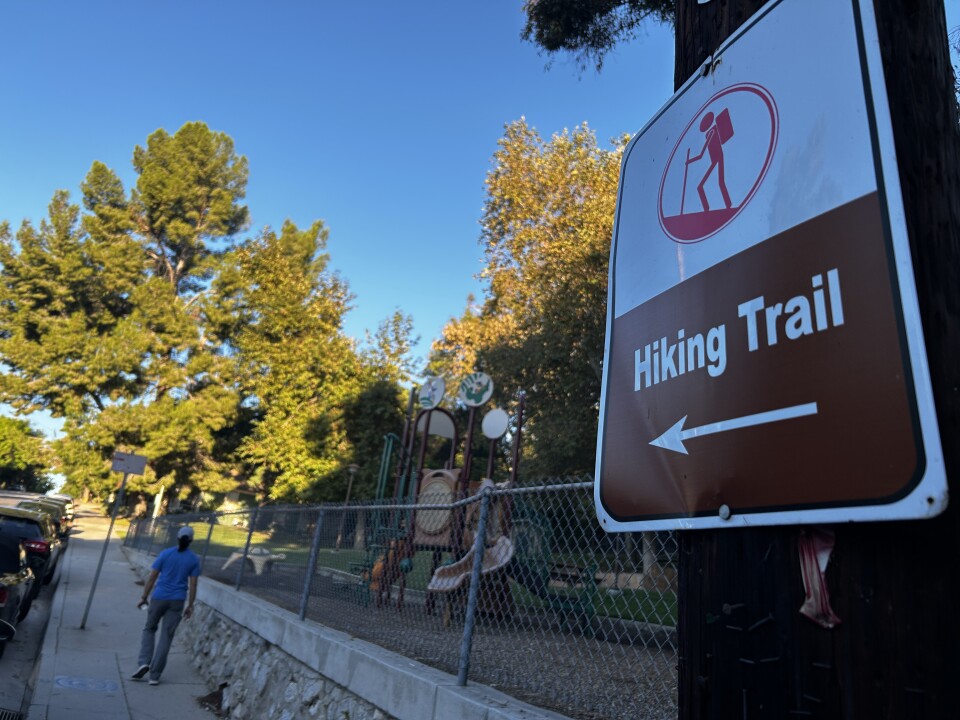
But the deluge of rain last winter after three of the driest years in 100 years have added even more work — and Spears said they’re just trying to keep up, especially with the potential for another wet year ahead.
“We're seeing vast changes in the weather patterns and that's going to affect a lot of how we do things,” Spears said. “And in my particular case, it's a lot about how we maintain the trail.”
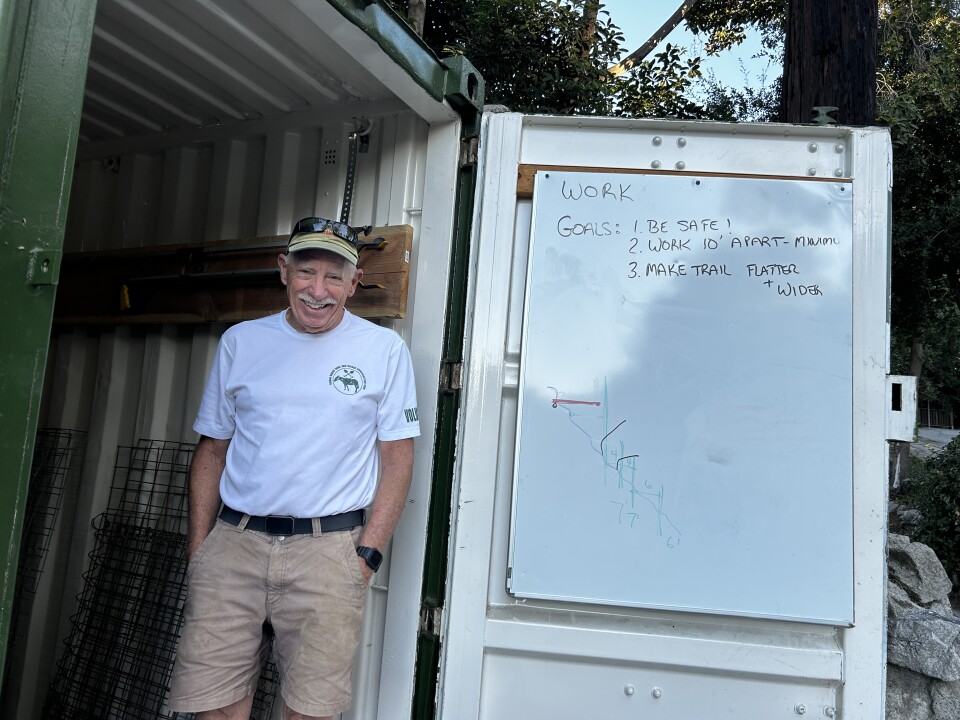
A popular nearby hiking trail — Chantry Flats — is still being repaired after the 2020 Bobcat Fire tore through, followed by last winter’s storms. Spears says that trail’s closure has also meant the Mt. Wilson trail has been getting even more traffic, so it also needs more maintenance.
The storms closed this part of the trail for days at a time, washing out entire sections that volunteers such as Spears are still working to repair.
“The trail can't fix itself, so that's what our job is,” Spears said.
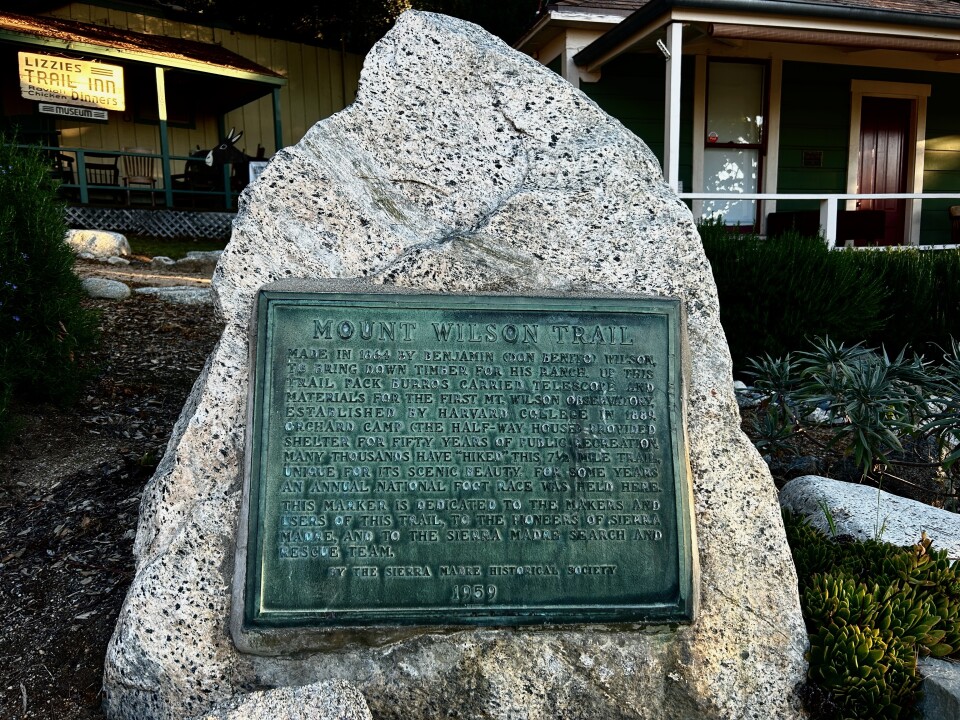
How to maintain a trail
Spears and I took a hike together recently on a quickly heating up fall day. Our first stop was to install a new sign at the trailhead that reads: “STOP: HEAT DANGER. Bring water for you and your pet.”
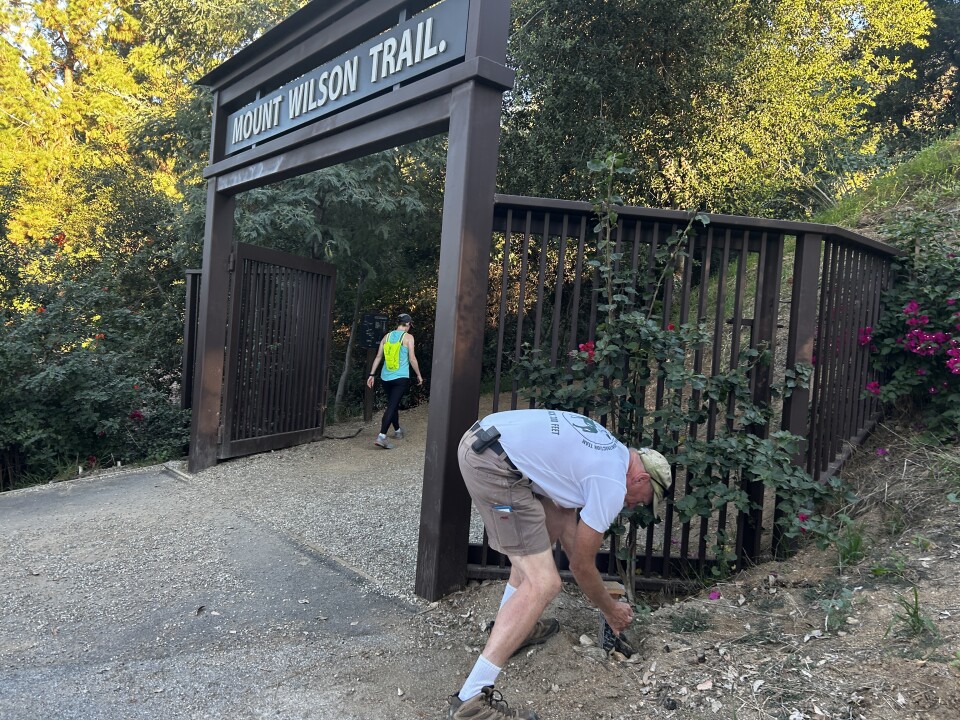
“We see constantly people go up there with dogs and no water and the search and rescue guys have had to go up to help rescue large dogs that collapse and it's very sad,” Spears said.
As we hike, Spears points out the local names of spots along the trail: Smoker’s Tree, where people often smoke cigarettes and toss the butts on the ground, which “makes me nuts,” said Spears (also, that’s just a really bad idea for a fire-prone mountain range). Then there’s Earthquake Fault — a popular area for bears to traverse, Spears notes with a chuckle, sharing a story of watching one amble by just a few feet away. Then there’s Rescue Ridge, a ridge with enough flat space at the end so helicopters could land to make rescues “back in the day,” Spears said.
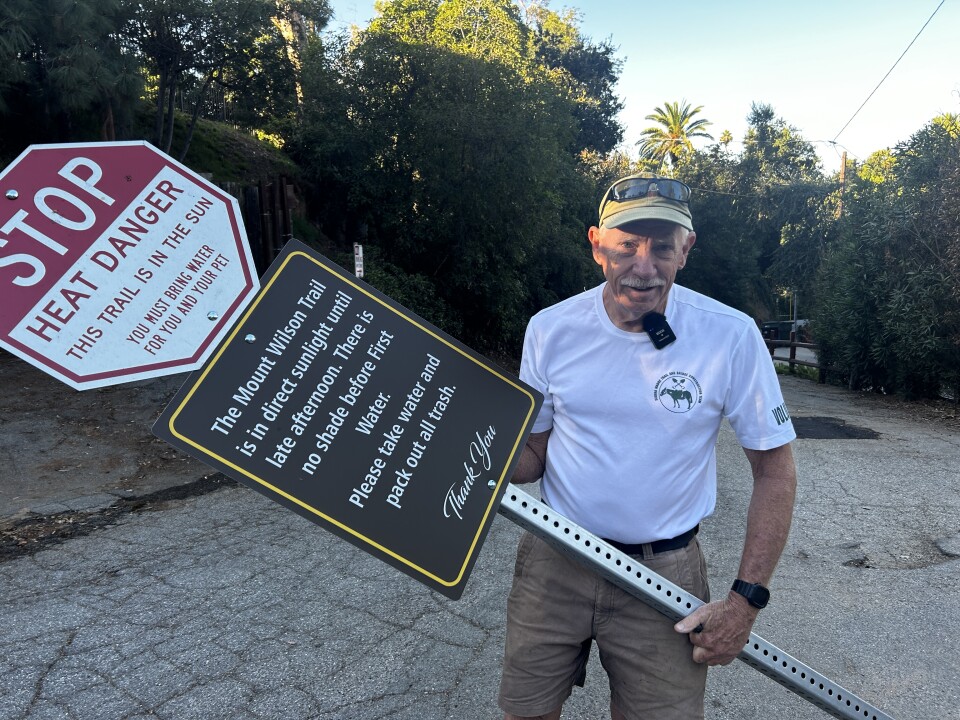
Between and around those spots are all the areas that Spears and his volunteers have fixed since last winter’s storms. Fixing the trail generally means “benching” it — cutting into the mountain to make an eroded trail wider, while shaping the trail so water runs off of it instead of into the center, eroding it further.
Then we arrive at a brand new wooden bridge.
“This area, of all the areas on the trail, suffered the most during the heavy rains,” Spears said.
It’s the first bridge that’s ever been installed on the trail in historic memory — a route that’s been used since at least 1864 — after a large section of the trail was completely washed out during last winter’s storms.
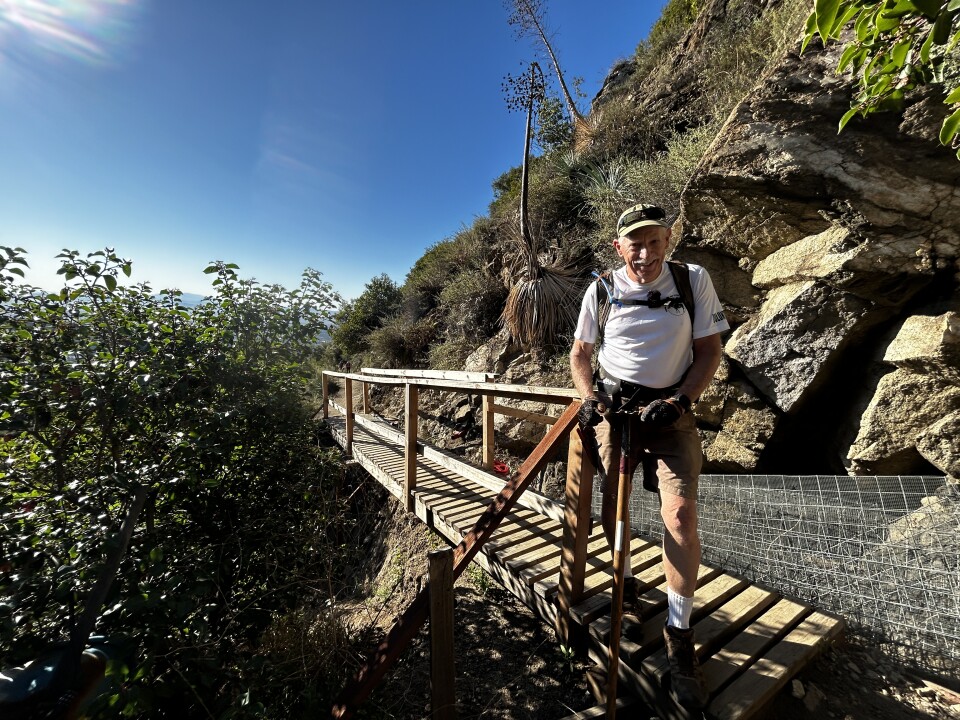
But the bridge is only temporary. Spears said the longer-term goal is to terrace the area, so water can flow down without destroying the trail. “Dirt lasts longer than wood,” Spears explained.
But Spears doesn’t mind all the work. In fact, he loves it.
“You get to play with cool toys. You get to go out and do good work. You get to help your fellow citizens,” Spears said. “Everybody says thank you and not a lot of jobs come with that kind of perk. Volunteers come with a sense of commitment that is different from a job. They're doing it because they really want to do it. That's why I like working on the trail.”
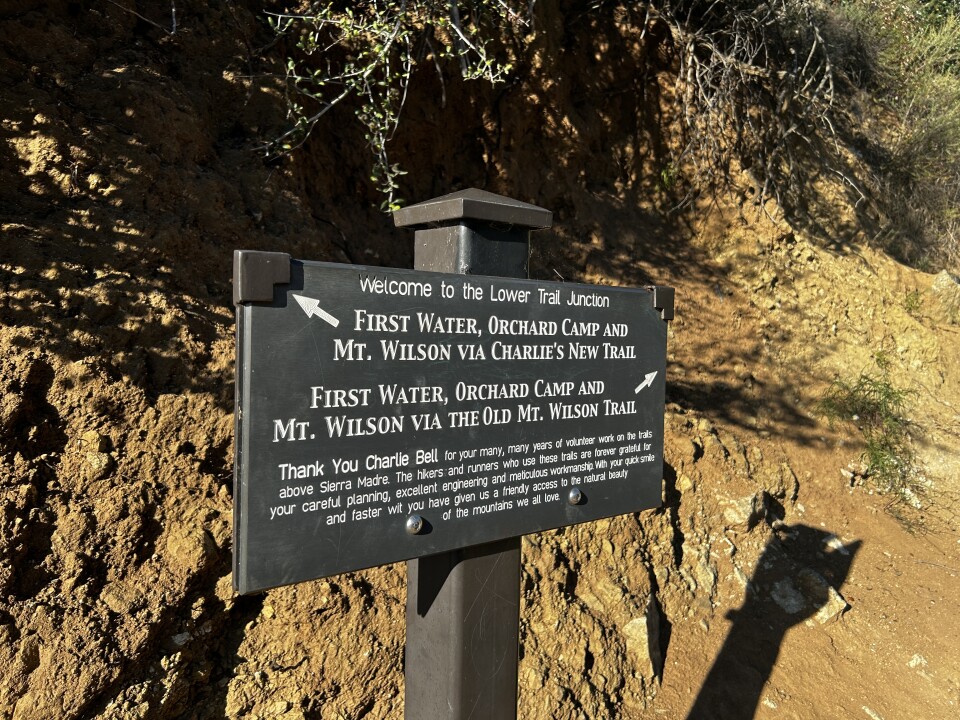
A brief history of the Mount Wilson Trail
- Local tribes made trails in this area millenia ago.
- The first modern trail to Mt. Wilson was made by Gabrielino-Tongva people, when Spanish missionaries forced them into labor and to build the trail to carry timber from the mountains to construct the San Gabriel Mission.
- The trail most similar to today's was originally built in 1864 by Benjamin I. Wilson, or Don Benito, who used it for lumber for his ranch, now the Huntington Library and Gardens.
- In 1889, Harvard College established the first observatory on Mt. Wilson.
- The Pacific Electric “Red Cars” came to Sierra Madre in 1906 and ran until 1950, bringing thousands of people from the growing city of L.A. to hike the trail.
A metaphor for the climate crisis
From the first trails made by local Indigenous people, to settlers cutting trails with burros to take lumber from the forest, to the present day when thousands of hikers find a bit of peace in nature away from the bustle of the city, our local trails have long shifted and been remade.
Trails straddle both permanence and impermanence, just like the San Gabriel Mountains, which are naturally some of the fastest growing — and fastest eroding — mountains in the country. But worsening wildfires and more extreme rainfall driven by human-caused climate change is only accelerating that process.
Back at the bottom of the Mt. Wilson Trail, Spears and I pause at First Water, a grove about a mile-and-a-half up the trail that’s shaded by trees along a flowing, natural creek that’s still gushing with water from last winter’s storms.
“I'm going to try to do whatever I can to stabilize this trail, but if we get the second flood from Noah, I’m not going to be able to sustain it,” Spears said.
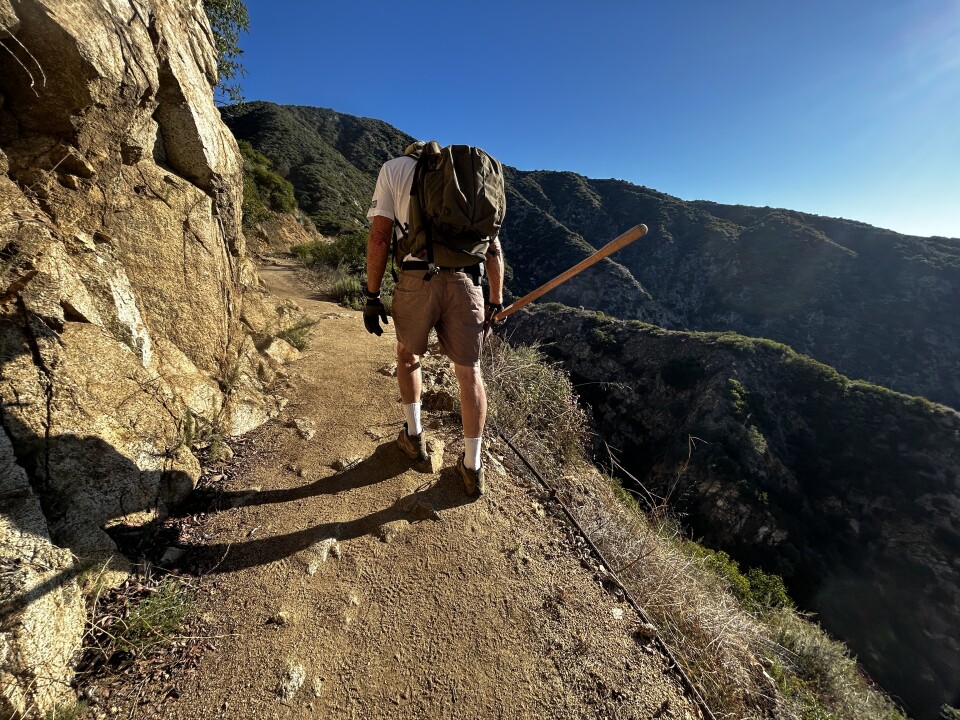
The Sisyphean effort of maintaining trails feels like a metaphor for dealing with the climate crisis as a whole.
My concern is that the pace of change is going to exceed human's ability to keep up.
“My concern is that the pace of change is going to exceed human's ability to keep up,” Spears said.
Spears said he’s pretty certain the climate crisis will mean some trails will ultimately be permanently lost, and the landscapes around others changed forever.
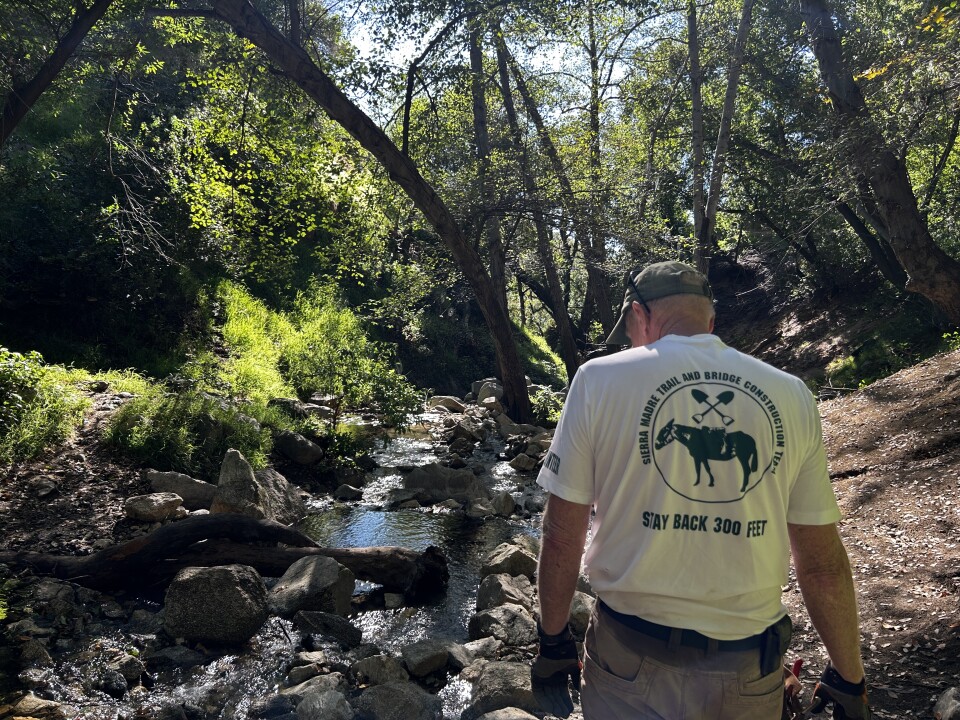
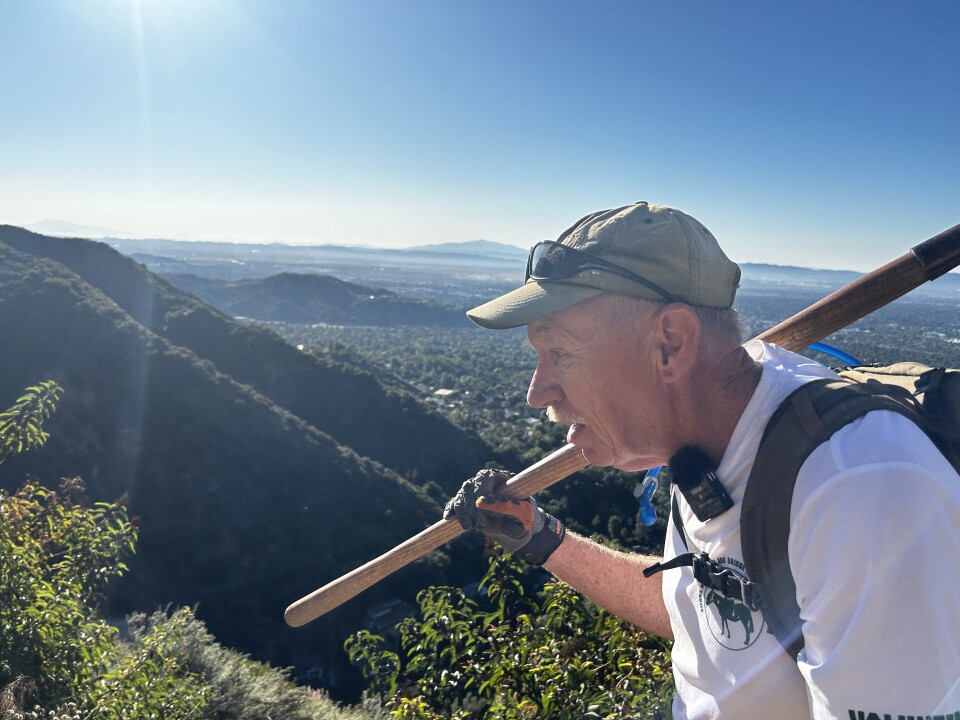
“I'm 74 years old and do I understand everything? No,” Spears said. “But the one thing that I do know is that everything is going to change. And in my experience, things are changing faster all the time.”
He’s certain about something else too, also earned through experience: That it only takes a small group of people to make a big difference.
“I'm not a unique individual in any sense,” Spears said, “so I'm sure there are people out there that would like to do something.”
In the meantime, Spears will continue doing his something...maintaining this particular trail so others can enjoy it — today, and as far into the future as possible.








